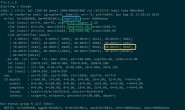这是关于playwright系列介绍的最后一篇。搭建基于 playwright 的自动化项目。
GitHub地址: https://github.com/defnngj/playwright-pro
具备功能
关键技术:
- pylaywright测试库
- pytest单元测试框架
- pytest-playwright插件
非关键技术:
- pytest-html插件
- pytest-rerunfailures插件
- seldom 测试框架
实现功能:
- 元素定位与操作分离
- 失败自动截图并保存到HTML报告
- 失败重跑
- 可配置不同的浏览器执行
- 可配置
headless/headful模式 - 实现参数化读取数据文件
一个自动化具备的基本功能差不多就这些了。其实主要是使用了一堆框架和插件,主要是整合能力。
使用方式
- 安装依赖
$ pip install -r requirements.txt
注:安装requirements.txt指定依赖库的版本,这是经过测试的,有时候新的版本可会有错。
- 配置
在 config.py 文件配置
class RunConfig:
"""
运行测试配置
"""
# 运行测试用例的目录或文件
cases_path = "./test_dir/test_parametrize.py"
# 配置浏览器驱动类型(chromium, firefox, webkit)。
browser = "chromium"
# 运行模式(headless, headful)
mode = "headful"
# 配置运行的 URL
url = "https://www.baidu.com"
# 失败重跑次数
rerun = "0"
# 当达到最大失败数,停止执行
max_fail = "5"
- 运行
运行测试
$ python run.py
设计细节
- 关于page object设计模式
page object是自动化测试最常用的设计模式。
但 playwright 中的只提供了操作方法,元素定位和测试数据都只是参数。
# 输入
page.type('#kw', "playwright")
# 点击
page.click('#su')
我们依然,可以将元素定位单独封装一层。
class BaiduElem:
search_input = "#kw" # 搜索框
search_button = "#su" # 搜索按钮
settings = "#s-usersetting-top" # 设置
search_setting = "#s-user-setting-menu > div > a.setpref" # 搜索设置
save_setting = 'text="保存设置"' # 保存设置
在测试用例中的使用
from element.baidu_element import BaiduElem
from playwright.sync_api import Page
def test_baidu_search(page: Page, base_url):
"""
"""
page.goto(base_url)
page.type(BaiduElem.search_input, text="playwright")
page.click(BaiduElem.search_button)
sleep(2)
assert page.title() == "playwright_百度搜索"
这肯定不是什么好的设计。用例层写起来会比较啰嗦, 最好可以page.elem.type("playwright") 的语法实现,这就需要在playwright的基础上再封装一套API, 看playwright 源码还是有些复杂的,主要是用了很多就异步,成本比较大,暂时先这么用。
- 关于自动截图
自动截图需要 pytest/pytest-html 和 playwright 配合完成, pytest/pytest-html 判断用例实现,并把图片插入到报告中。 playwright 实现截图动作。
@pytest.mark.hookwrapper
def pytest_runtest_makereport(item):
"""
用于向测试用例中添加用例的开始时间、内部注释,和失败截图等.
:param item:
"""
pytest_html = item.config.pluginmanager.getplugin('html')
outcome = yield
report = outcome.get_result()
report.description = description_html(item.function.__doc__)
extra = getattr(report, 'extra', [])
page = item.funcargs["page"]
if report.when == 'call':
xfail = hasattr(report, 'wasxfail')
if (report.skipped and xfail) or (report.failed and not xfail):
case_path = report.nodeid.replace("::", "_") + ".png"
if "[" in case_path:
case_name = case_path.split("-")[0] + "].png"
else:
case_name = case_path
capture_screenshots(case_name, page)
img_path = "image/" + case_name.split("/")[-1]
if img_path:
html = '<div><img src="%s" alt="screenshot" style="width:304px;height:228px;" ' \
'onclick="window.open(this.src)" align="right"/></div>' % img_path
extra.append(pytest_html.extras.html(html))
report.extra = extra
def capture_screenshots(case_name, page):
"""
配置用例失败截图路径
:param case_name: 用例名
:return:
"""
global driver
file_name = case_name.split("/")[-1]
if RunConfig.NEW_REPORT is None:
raise NameError('没有初始化测试报告目录')
else:
image_dir = os.path.join(RunConfig.NEW_REPORT, "image", file_name)
page.screenshot(path=image_dir)
通过page = item.funcargs["page"] 拿到playwright的驱动,截图判断逻辑有点复杂,不过我已经实现了。
总结
- playwright还不稳定,我在使用的时候时常报一些错误,错误日志也不友好。计划在正式项目中使用的谨慎考虑,估计有一些坑要踩。
- 不熟悉playwright的API,可以通过官方文档,或者是项目自带的测试用例,或者阅读项目源码都是很好的学习方式。




